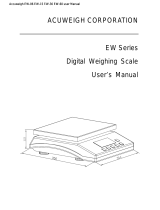
Table of Contents
Red Hat Enterprise/CentOS, Fedora Core, Open SuSE, SLES – Installing the
Web-based Management utility ..................................................................... 27
Debian/Ubuntu Linux Distributions – Installing the Web-based Management
Utility .............................................................................................................. 29
Linux Distributions – Command Line Interface (CLI)………………………… 30
1 - Installing the Web GUI (v1.5.5) - Windows Operating Systems ( Vista,
2008, Windows 7) .......................................................................................... 30
2 - Starting the Web GUI ................................................................................ 34
3 - Web GUI – Icon Definitions ...................................................................... 35
4 - Web GUI - Configuring an Array ............................................................... 36
Initializing a new hard drive……………………………………………………36
Create an Array……………………………………………………………….37
5 - Web GUI - Configuring Spare Disks ......................................................... 40
To assign a Spare disk:………………………………………………………...40
6 - Web GUI - Recovering an Array ............................................................... 41
To Rebuild an array:………………………………………………………….42
7 - Web GUI - Maintaining RAID Arrays ........................................................ 43
Scheduling Tasks:………………………………………………………………44
Removing Tasks……………………………………………………………...44
SHI – Storage Health Inspector……………………………………………….44
8 - Web GUI - Safeguarding your Array ......................................................... 45
Automatic RAID Rebuilding……………………………………………………46
9 - Web GUI - Event Notification .................................................................... 48
Configuring SMTP (E-mail) Notification……………………………………49
10 - Web GUI - Advanced RAID Functions (Windows VSS, OCE/ORLM) .... 50
VSS – Variable Sector Size……………………………………………………50
Online Capacity Expansion and RAID Level Migration (OCE/ORLM)….55
CUSTOMER SUPPORT ................................................................................ 58






















![BESIGN[Large Size] Besign Adjustable Latop Table, Portable Standing Bed Desk, Foldable Sofa Breakfast Tray, Notebook Computer Stand for Reading and Writing – Black](http://vs1.manuzoid.com/store/data/000914356_2-e9e5bc9f4c7b12f9365134d90c50922d-160x210.png)
